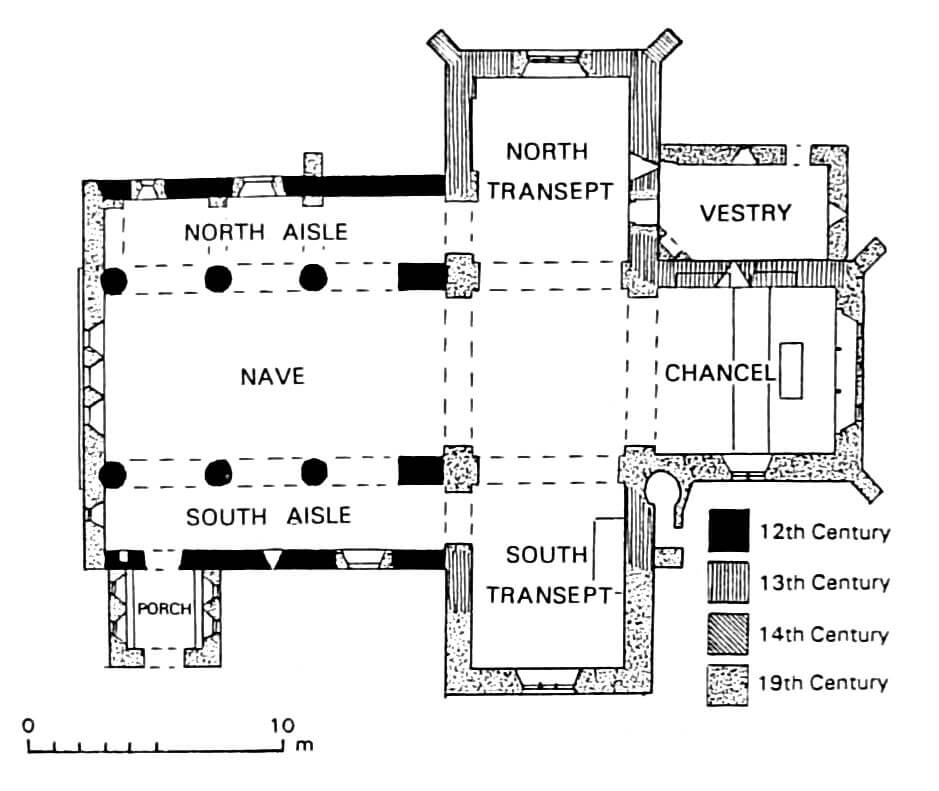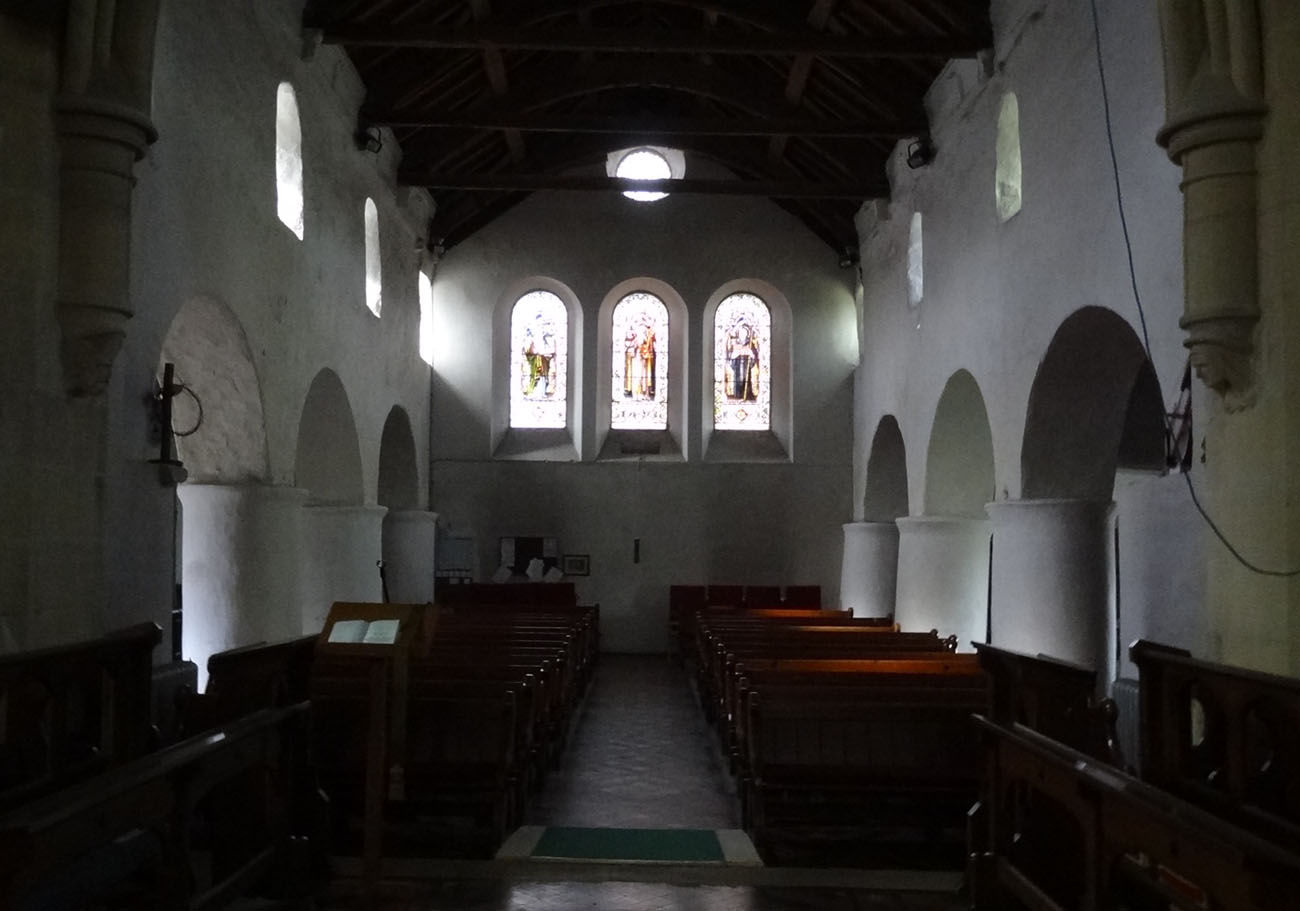History
According to the chronicle of Brut y Tywysogion, the original temple in Tywyn was destroyed by the Vikings in 963. The present church of St. Cadfan was erected in the 12th century and in the 13th/14th century it was expanded with a tower, transept and a new presbytery. In 1693, the church tower collapsed, destroying the southern transept and part of the southern wall of the presbytery. In 1735-1737 a new tower was built, however, it was erected on the west side of the nave, which was also shortened. During the renovation of 1881-1884, the new tower was pulled down, the worn chancel and the transepts were thoroughly rebuilt and a new tower was erected at intersection of the naves.
Architecture
At the end of the Middle Ages, the church consisted of a aisled nave in the form of a basilica, a rectangular chancel on the eastern side, northern and southern transept, and a low, four-sided tower at the crossing. The nave had four bays in length, separated into aisles by semicircular arcades without moulding, mounted on massive, circular columns with a diameter of 1.1 meters, without capitals. The oldest windows were very narrow, semicircularly closed, splayed to the interior. So the interior was dark and austere in the Romanesque period. In the thirteenth and fourteenth centuries, openings with pointed tops were already introduced in the transept and presbytery. Inside, both the central nave and the aisles were covered with a wooden, open roof truss.
Current state
Originally, the nave was about 4 meters longer towards the west. Not counting this difference, the current layout of the building corresponds to its medieval appearance, however, the 12th-century, historic substance is only in the central nave and aisles, and the 13th / 14th-century in the northern arm of the transept, partly in the southern arm and in the northern wall of the chancel. In the northern walls of the transept and the chancel, the original window openings have been preserved, as well as the part of the windows in the longitudinal walls of the nave. The rest is largely the result of nineteenth-century renovations, including a completely modern porch and sacristy.
Inside the church you can see two carved stones from the 8th/9th century. On the Cadfan Stone there are the earliest inscriptions in Welsh: “Tegrumui married wife of Adgan (lying) near But Marciau”, “here lie three”, “Cun wife of Celen, loss and grief remain”, “here lie four”. On the second stone, there is a hole at the top, in which the peg was originally embedded, defining time by the sun. In addition, inside the church can see the 14th-century tombstone of the priest and knight Gruffud ap Adda.
bibliography:
Salter M., The old parish churches of North Wales, Malvern 1993.
The Royal Commission on The Ancient and Historical Monuments and Constructions in Wales and Monmouthshire. An Inventory of the Ancient Monuments in Wales and Monmouthshire. County of Merioneth, London 1921.
Wooding J., Yates N., A Guide to the churches and chapels of Wales, Cardiff 2011.
Website britishlistedbuildings.co.uk, Church of St Cadfan A Grade I Listed Building in Tywyn, Gwynedd.
Website coflein.gov.uk, Tywyn 4 St Cadfan’s church, Tywyn.



